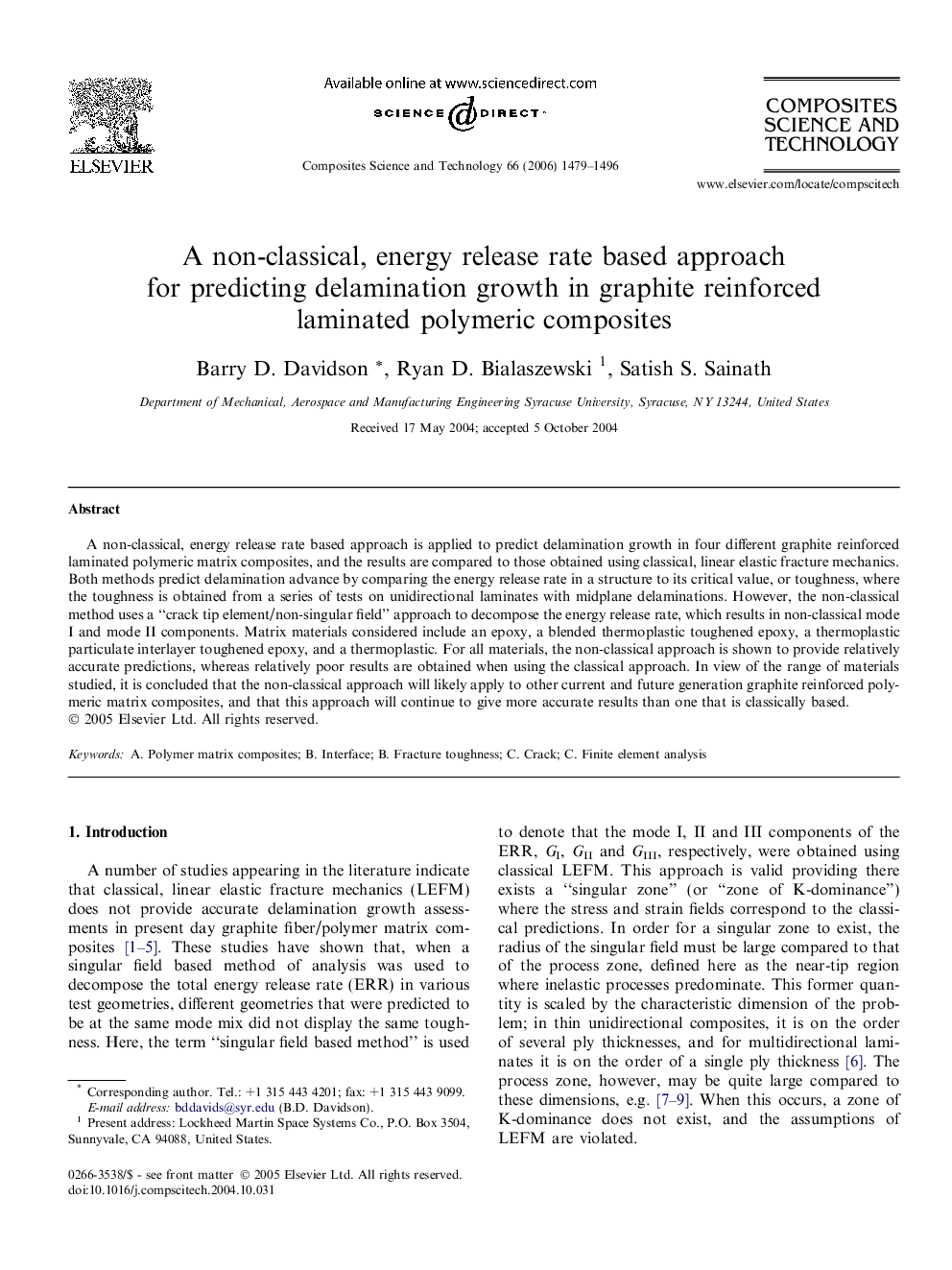| Article ID | Journal | Published Year | Pages | File Type |
|---|---|---|---|---|
| 822960 | Composites Science and Technology | 2006 | 18 Pages |
A non-classical, energy release rate based approach is applied to predict delamination growth in four different graphite reinforced laminated polymeric matrix composites, and the results are compared to those obtained using classical, linear elastic fracture mechanics. Both methods predict delamination advance by comparing the energy release rate in a structure to its critical value, or toughness, where the toughness is obtained from a series of tests on unidirectional laminates with midplane delaminations. However, the non-classical method uses a “crack tip element/non-singular field” approach to decompose the energy release rate, which results in non-classical mode I and mode II components. Matrix materials considered include an epoxy, a blended thermoplastic toughened epoxy, a thermoplastic particulate interlayer toughened epoxy, and a thermoplastic. For all materials, the non-classical approach is shown to provide relatively accurate predictions, whereas relatively poor results are obtained when using the classical approach. In view of the range of materials studied, it is concluded that the non-classical approach will likely apply to other current and future generation graphite reinforced polymeric matrix composites, and that this approach will continue to give more accurate results than one that is classically based.
